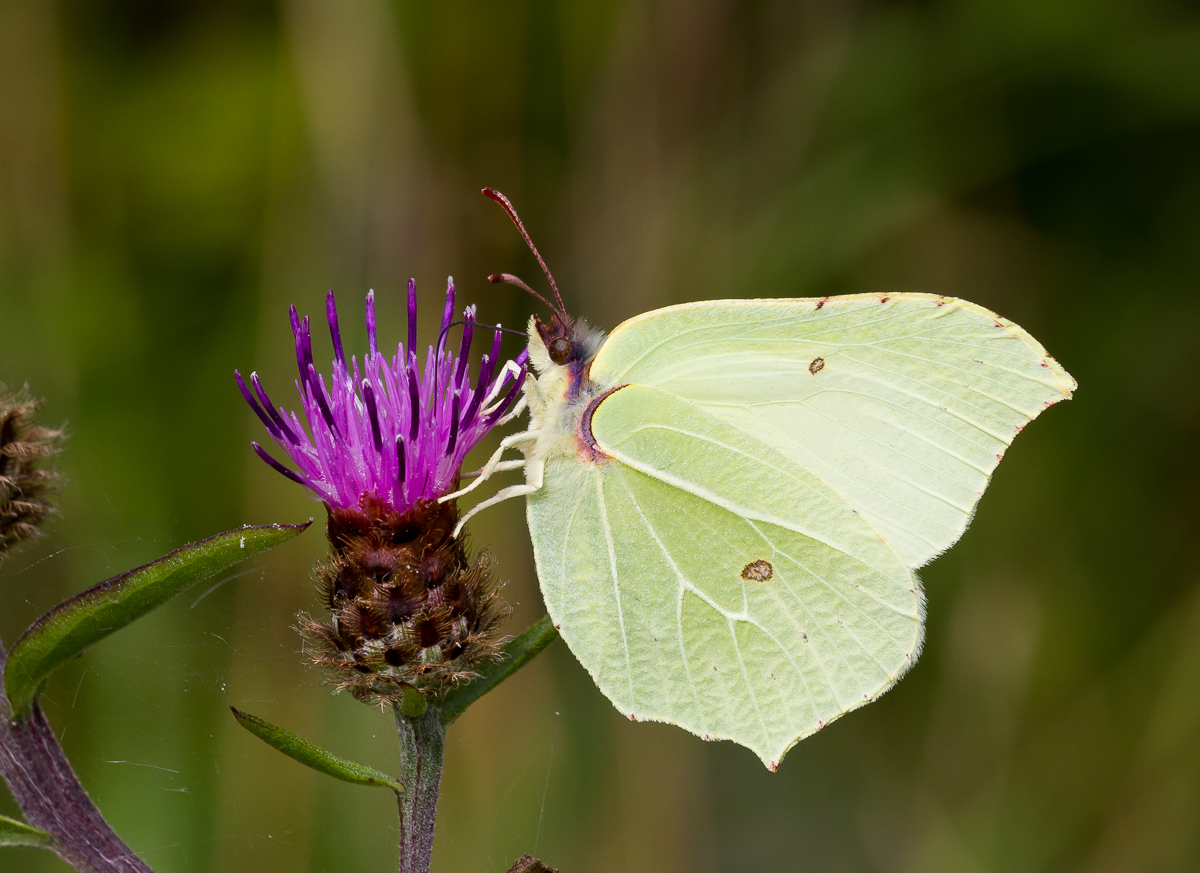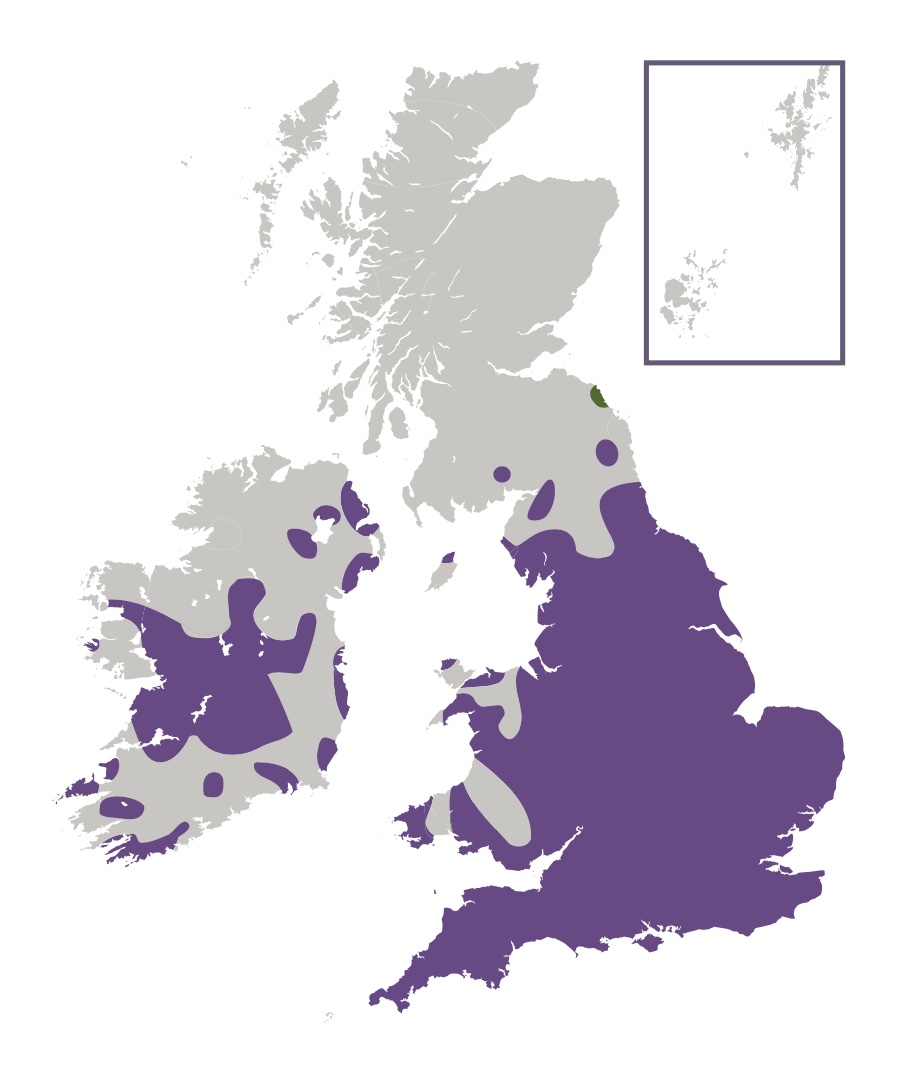
Photo © Peter Eeles
It is commonly believed that the word "butterfly" is a derived from "butter-coloured fly" which is attributed to the yellow of the male Brimstone butterfly, the female being a much paler whitish-green. The Brimstone has a most exquisite wing shape, perfectly matching a leaf when roosting overnight or hibernating within foliage. This is one of the few species that hibernates as an adult and, as such, spends the majority of its life as an adult butterfly. The distribution of this species closely follows that of the larval foodplant. In England, where it is represented by the subspecies rhamni, it can be found south of a line from Cheshire in the west to South-east Yorkshire in the east, although vagrants may turn up in other areas. In Ireland, where it is represented by the subspecies gravesi, its strongholds are in a small area that lies between the borders of West Galway, West Mayo and East Mayo, and a band running through central Ireland from Clare in the west to Kildare in the east.
Newly-emerged adults spend much of their time feeding, where they always settle with their wings closed, showing a preference for purple and nectar-rich flowers such as Thistle and Devil's-bit Scabious. The long proboscis of this species also allows the butterfly to take nectar from flowers, such as Teasel, that are beyond the reach of many other butterfly species. With the approach of autumn, the butterfly settles down to hibernate - often among leaves of Ivy, Holly or Bramble.
Adults emerging in the spring nectar on a variety of available flowers, such as Dandelion, Primrose, Cowslip, Bugle and Bluebell. They can often be seen resting with their wings at right angles to the sun to gain the full effect of the warm rays at this relatively-cool time of year.
Males are the first to be seen in the spring and can be seen patrolling woodland edges, hedgerows and other habitats looking for a mate. When a virgin female is found, male and female fly high into the air, often out of sight, before tumbling back down into a bush where they then mate. Females are quite selective about the plants on which they lay - even on sites with many Buckthorns present, only a very small proportion of these will tend to be used by females in the area.

The Brimstone is a great wanderer and can be found in almost any habitat, from chalk downland to woodland rides to gardens.
Adults feed primarily on thistles (Carduus spp. and Cirsium spp.). Betony (Betonica officinalis), Bluebell (Hyacinthoides non-scripta), Bugle (Ajuga reptans), Common Fleabane (Pulicaria dysenterica), Cowslip (Primula veris), dandelions (Taraxacum spp.), Devil's-bit Scabious (Succisa pratensis), knapweeds (Centaurea spp.), Primrose (Primula vulgaris), Ragged-Robin (Silene flos-cuculi), Red Campion (Silene dioica), Selfheal (Prunella vulgaris), vetches (Vicia spp.), Wild Marjoram (Origanum vulgare) and Wild Teasel (Dipsacus fullonum) are also used.
The primary larval foodplants are Alder Buckthorn (Frangula alnus) and Buckthorn (Rhamnus cathartica).
